The profitability of Landsvirkjun, Iceland’s national energy company, is way too low. And worst off is the Kárahnjúkar hydro power plant, Europe’s largest dam, the company’s biggest and most expensive construction. Landsvirkjun’s director Hörður Arnarson revealed this during the company’s recent autumn meeting, and blamed the low price of energy sold to large-scale energy consumers, such as Alcoa’s aluminium smelter in Reyðarfjörður, as one of the biggest factors reducing profit.
These news echo the many warnings made by the opponents of the cluster of five dams at Kárahnjúkar and nearby Eyjabakkar, who repeatedly stated that the project’s alleged profitability was nothing but an illusion, but were systematically silenced by Iceland’s authorities.
Now, as these facts finally become established in the media—this time straight from the horse’s mouth—similarly bad news has arrived regarding another big Icelandic energy company. Reykjavík Energy has failed to make a profit from their 2007 and 2008 investments, effectively making them lose money.
At the same time, new research shows that the environmental impacts of the Kárahnjúkar dams are exactly as vast and serious as environmentalists and scientists feared.And yet, more dams, geothermal power-plants and aluminium smelters are on the drawing table—presented as the only viable way out of the current economic crisis.
Dividend: Close to Zero
During the last half century, Landsvirkjun has paid its owner—the Icelandic nation—only 7,8 billion Icelandic Krónur (66 million USD at present value) as dividend, which according to Hörður Arnarson is way too low and in fact almost equivalent to zero. While it would be fair to expect around eleven percent dividend from the company’s own equity, it has been at an average of two percent since Landsvirkjun was founded. The income from the Kárahnjúkar plant has been about 6 percent of its book value, which again is too low, as according to normal standards the income should be 9 percent of the book value.
At present, Landvirkjun’s total earnings have been 73 million US dollars at most, whereas it should be closer to 180 million USD, considering the owner’s 1,6 billion USD equity. It was made clear by Arnarson that the price of energy purchased by large-scale energy consumers plays a major role herein—a price that obviously has been far below any rational logic and standards.
Same Old, Same Old
In 2003, British newspaper The Guardian published “Power Driven”, Susan De Muth’s exclusive report about the Kárahnjúkar power plant, which at that point was already under construction. Among many critiques made in the article, De Muth questioned Kárahnjúkar’s allegeded profitability. She wrote:
Thorsteinn Siglaugsson, a risk specialist, prepared a recent independent economic report on Karahnjukar for the Icelandic Nature Conservation Association. “Landsvirkjun’s figures do not comprise adequate cost and risk analysis,” he says, “nor realistic contingencies for overruns.” Had the state not guaranteed the loans for the project, Siglaugsson adds, it would never have attracted private finance. “Karahnjukar will never make a profit, and the Icelandic taxpayer may well end up subsidising Alcoa.”
Siglaugsson is just one of many who critically analysed the economics of the Kárahnjúkar project, concluding that its contribution to Iceland’s economy would be about none—or in fact negative. But just as many geologists who cautioned against the risks of locating the dams in a highly geologically seismic area were dismissed by Valgerður Sverrisdóttir, then Minister of Industry, as “politically motivated and not to be listened to”, so were the skeptical economists.
De Muth’s article caused a real stir in Iceland, manifest for instance in the fact that Landsvirkjun and Iceland’s Embassy in London contacted The Guardian in a complaint about “so much space […] used for promoting factual errors and misconceptions of the project and Icelandic society as a whole.” Friðrik Sophusson, Landsvirkjun’s director at that time—who in the article is quoted calling all of Kárahnjúkar’s opponents “romantics”—actually offered The Guardian to send another journalist over to Iceland in order to do “a proper report on issues in Iceland”, this time with his “assistance.” ALCOA also sent a barrage of objections to the Guardian. All the facts presented in the article were double checked by the Guardian’s legal team and confirmed to be accurate.
This volatile response from the authorities and corporates only strengthened the article’s points on the Icelandic tradition of suppressing criticism. This was confirmed in a letter to The Guardian by Icelandic environmentalist and commentator Lára Hanna Einarsdóttir, who suggested that “an Icelandic journalist would have lost [his or her] job if he or she had been so outspoken.”
The Coming Recession
And no wonder, as the article pinpointed serious flaws in the whole rhetoric surrounding the plans to heavily industrialize Iceland, plans that would be nothing without the construction of a series of mega hydro dams and geothermal power plants. Whereas these plans were presented as a path to an increased economical prosperity, De Muth quoted aforementioned economist Siglaugsson, who voiced his fear “that a boom during the construction period, with attendant high interest rates, will be followed by a recession.”
And as time told, this was indeed what happened. In an article published in the early days of Iceland’s current financial crisis, Jaap Krater, ecological economist and spokesperson of Saving Iceland, gave it a thorough explanation:
These mega-projects in a small economy have been compared to a ‘heroin addiction’. Short-term ‘shots’ lead to a long-term collapse. The choice is between a short-term infuse or long-term sustainable economic development. The ‘shot’ of Fjardaal [Alcoa’s aluminium smelter in Iceland, powered by the Kárahnjúkar power plant] overheated the Icelandic economy.
Recognizing the dangers of overheating the economy—a point also made clear in Charles Ferguson’s recent documentary, Inside Job—leaves us with two options. As Krater pointed out:
There has been a lot of critique on the proposed plans to develop Iceland’s unique energy resources. Those in favour of it have generally argued that it is good for the economy. Anyone who gives it a moment of thought can conclude that that is a myth. Supposed economic benefits from new power plants and industrial plants need to be assessed and discussed critically and realistically. Iceland is coming down from a high. Will it have another shot, or go cold turkey?
Another Shot, Please
This spring, Landsvirkjun stated that if the company was to start its operations from scratch the aluminium industry would be its prime costumer. This particular paradox—as the aluminium industry is already its biggest energy purchaser—was just one of Landsvirkjun’s many. Another one is their suggestion that Icelanders should “settle upon” plans to build 14 new power plants in the next 15 years. And the third one is the company’s plans to sell more energy to aluminium companies—costumers who, in Landsvirkjun’s own words, do not pay a fair amount for what they get.
But Arnarson has said that the future looks better, referring for instance to the fact that the price for Kárahnjúkar’s energy is directly connected to world-wide aluminium prices, which Arnarson says are getting higher. Herein is the fourth paradox, as linking energy prices with aluminium prices has so far been disastrous for Iceland’s economy—most recently acknowledged in an official report regarding the profitability of selling energy to heavy industry. According to the report, commissioned by the Ministry of Finance and published last Friday, December 2nd, the total profitability has been an average 5% from 1990 until today, which is far below the profitability of other industries in Iceland, and much lower than the profitability of similar industries in Iceland’s neighbouring countries. The year 1990 is crucial here, as since then, Landsvirkjun’s energy prices to heavy industry have been directly linked to global aluminium prices.
It is worth quoting Jaap Krater again here, where he explains the dangers of interlinking these two prices, and describes how increased aluminium supply will lower the price of aluminium and decrease revenue for Iceland:
One might think that a few hundred thousand tons of aluminium more or less will not impact the global market. The reality is that it is not the sum of production that determines the price but rather the friction between supply and demand. A small amount of difference can have a significant effect in terms of pricing.
High Costs, Low Production
On top of this, recent calculations revealed in newspaper Fréttablaðið, show that Kárahnjúkar is Landsvirkjun’s proportionally most expensive construction. When the production of each of the company’s power plants is compared with the production of Landsvirkjun’s property as a whole, as a proportion of their construction costs, it becomes clear that Kárahnjúkar—with its 2.3 billion USD initial cost—is the most economically unviable plant.
Another Energy Company in Crisis
At the same time that Icelanders face Landsvirkjun’s confession to it’s virtually zero profitability, a damning report on another big energy company, Reykjavík Energy (OR), has been made public. It was originally published at the beginning of this year but wasn’t supposed to enter the public sphere, which it indeed didn’t until in late November. Reykjavík Energy’s biggest shareholder is the city of Reykjavík, meaning the inhabitants of Reykjavík.
As already documented thoroughly, the company—which operates several geothermal power plants, including Hellisheiðarvirkjun, largely built to fuel Century Aluminum’s production—is in pretty deep water. But the newly leaked report proves that it has sunk even deeper than generally considered. The report is a literal condemnation of the company, its board and its highest ranking managers, who get a grade F for their job. A good part of Reykjavík Energy’s investments from 2007 and 2008 are now considered as lost money.
The report also reveals that when energy contracts between OR and Norðurál (Century Aluminum) were made, for the latter’s planned fantasy-of-a-smelter in Helguvík, Reykjavík Energy’s directors completely ignored the very visible economic collapse confronting them.
Recently it has been reported that Reykjavík Energy owes 200 billion Icelandic ISK in foreign currency, which is two thirds of all foreign debts owed by Icelandic companies, whose income is not in foreign currency.
What we see here are two of Iceland’s largest energy companies, both of them public property, both having spent hugely excessive amounts of money—or more precisely, collected gigantic debts—struggling to continue to build power plants in order to feed the highly energy intensive aluminium industry with dirt cheap and allegedly “green” energy. As a result, they have ended up without profit and in a deep pool of debt.
And who is to pay for their gambling risks? As Thorsteinn Siglaugsson stated in 2003: the Icelandic taxpayer.
“No Impacts” Become Huge Impacts
To make bad news even worse, the irreversibly destructive ecological impacts of the Kárahnjúkar dams have, in the last months, become more and more visible. To quote “Power Driven” once again (as simply one of a good number of warnings on the dams’ environmental impacts):
The hydro-project will also divert Jokulsa a Dal at the main dam, hurtling the river through tunnels into the slow-moving Jokulsa i Fljotsdal, which feeds Iceland’s longest lake, Lagarfljot. The calm, silver surface of this tourist attraction will become muddy, turbulent and unnavigable.
This was written in 2003. Today, this is what is happening: because of the river’s glacial turbidity Lagarfljót has changed colour, which according to Guðni Guðbergsson, ichthyologist at the Institute of Freshwater Fisheries (IFF), means that light doesn’t reach as deep into the water as before (see photos aside and below). Photosynthesis, which is the fundamental basis for organic production, decreases due to limited light, its domino effects being the constant reduction of food for the fish. IFF’s researches show that near Egilsstaðir, where visibility in Lagarfljót was 60 cm before the dams were built, it is now only 17 cm. They also show that there are not only less fish in the river, but that the fish are much smaller than before.
In addition to this, residents by Lagarfljót have faced serious land erosion due to the river’s increased water content and strength.
This effect was warned of in an Environmental Impact Assessment (EIA) for the project by the Iceland National Planning Agency (INPA), purposely ignored and overruled by Siv Friðleifsdóttir, then Minister of Environment. Landsvirkjun had complained to the Ministry of the Environment, and the EIA ended up on Friðleifsdóttir’s table, who nevertheless issued a permit for the construction, stating that the dams would have no significant impact on Lagarfljót.
In response of the news on Lagarfljót’s current condition, Svandís Svavarsdóttir, Minister of the Environment, said during parliamentary discussion last September, that her Ministry’s over-all administration regarding the Kárahnjúkar decision-process will be examined in detail. She should demand a similar investigation into the decision making of the Ministry of Industry, whose Minister, Valgerður Sverissdóttir has, along with Landsvirkjun’s Friðrik Sophusson, openly admitted while joking on film with the US ambassador in Iceland, how they enjoyed “bending all the rules, just for Alcoa.”
All the Old Dogs
Despite all of this, Iceland’s energy companies, hand in hand with the aluminium industry, some of the biggest labour unions and industry-related associations—not to mention a majority of parliamentarians, including those of government-member social-democratic Samfylkingin—are still in heavy industry mode, campaigning for the construction of more dams, geothermal power plants and aluminium smelters. Ironically, but still deadly serious, smelter projects such as Century Alumium’s Helguvík, which is at a standstill, unable to guarantee both necessary energy and financing, continue to be presented as profitable solutions to the current crisis.
Met with little resistance in parliament, most of these plans are still considered to be on the drawing table, though most of them seem to be on hold when looked at closely. The latter is mostly thanks to grassroots activists, bloggers and commentators who have systematically reminded the public of the reality, while the bulk of journalists seem to be unable to stick to facts—being extraordinarily co-dependent with those in favour of further heavy-industrialization.
Under the banner of “solving the crisis”, “creating jobs”, and most recently “getting the wheels of work to spin again”, the heavy industry-favoured parties seem to simply refuse to listen to hard facts, even their very own. This attitude is probably best summed up in the recent words of Valgerður Sverrisdóttir, responsible as Minister of Industry, for the building of the dams at Kárahnjúkar, who in response to the news about the power plant’s close-to-zero profitability, said that she wouldn’t want to imagine how the current financial situation would be, if the dams hadn’t been built.
It is said that an old dog will not learn new tricks. And to be honest, ‘old dogs’ pretty accurately describes those making decisions on Iceland’s energy and industry affairs. In order to learn from mistakes and prevent even bigger catastrophes, it wouldn’t be unfair to ask for a new generation—would it?
_____________________________________________________
More photos of Lagarfljót’s turbid condition
These photos are from 2008, which suggests that the current condition is even worse.
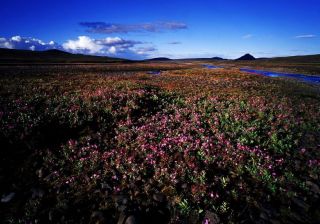
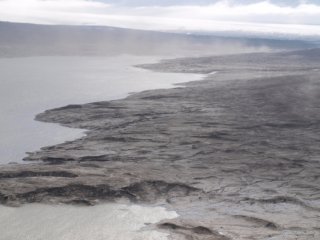
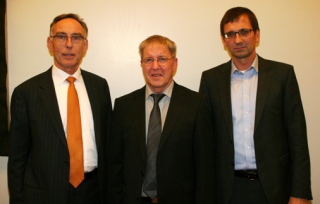

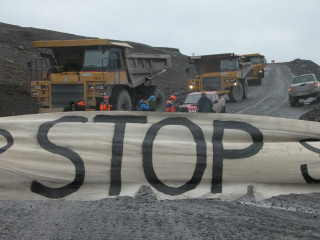
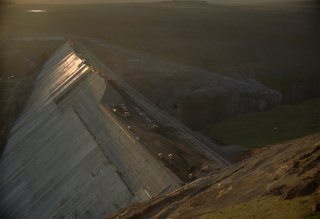
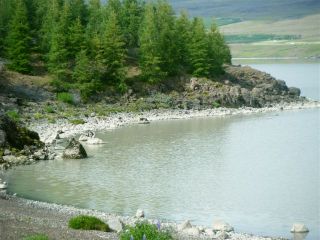
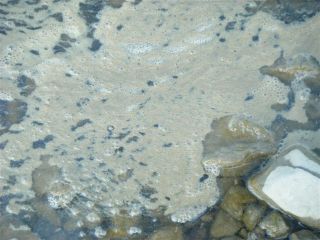
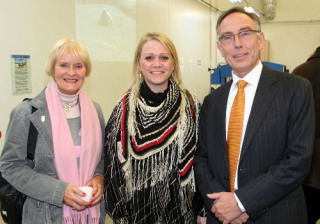
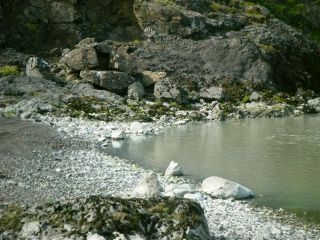
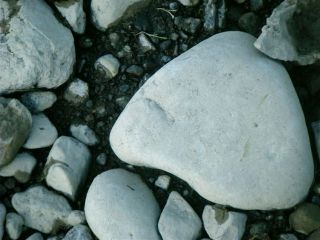
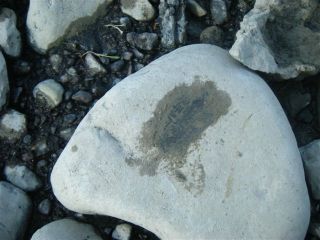
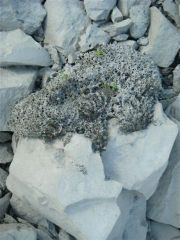
I became aware of this disaster this morning, while watching the Nattura concert produced by Bjork and Sigur Ros. What can be done to prevent further destruction of this land of unimaginable beauty?
Dams are rarely good news for the environment, although useful enough for people.
This is a good example of how we misunderstand natural disturbances. A flood sufficient to disturb a large lake will occur every now and then but this is not the same as water energy inputs 24/7
I reckon it has to be time to bring the youngsters in all over the world. So says an old dog.
‘Takk fyrir’ interesting reading. I used some of the information in my thesis, by I can’t find the name of the author of this article.
Can you help me?
Best regards, Sofie
Human is greedy.
I am happy to see some people are working hard to protect iceland’s nature.